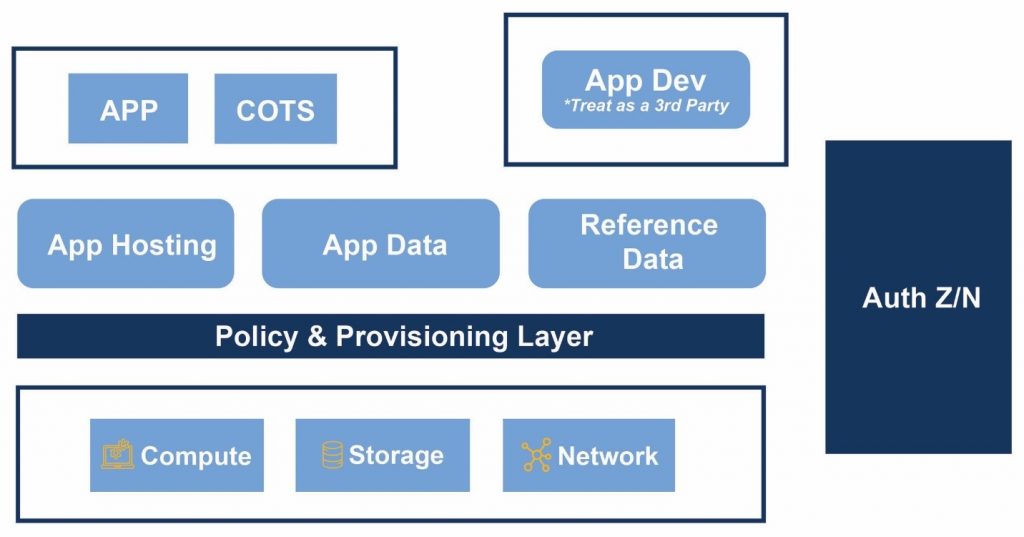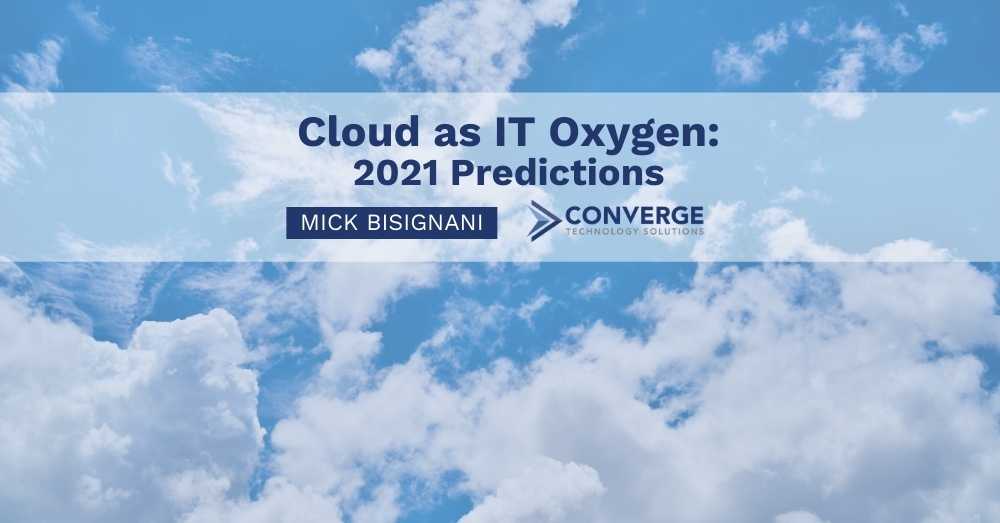I often use the expression “Cloud as IT Oxygen” – but, what do I mean by such an expression?
The global catastrophe of the COVID-19 pandemic has changed our world and unleashed a set of forces driving change across all areas of human activity. Cloud adoption has been an area that has been propelled by the need for a more versatile model of computing. Accenture reports in TechVision 2021 that “leadership demands that enterprises prioritize technology innovation in response to a radically changing world.” This is a very significant statement that positions technology as the driver for innovation and growth.
Despite this acceleration, many enterprises have been moving along their journeys of cloud transformation in low gear. By some estimates, only twenty percent of workloads have been migrated or redeployed to the cloud. Twenty percent is only the tip of the iceberg. Not only are our workloads increasing, but data itself continues to expand and be collected at a staggering rate. Therefore, organizations find themselves in a race they are bound to lose. Requirements and designs are emerging that continue to drive massive amounts of computing consumption alongside even greater amounts of storage. As new resources are brought online, often they run out of capacity within months of deployment.
What if these types of resources were simply items that can be provisioned according to a true utility model from your cloud provider of choice? What if you could plug into the cloud and use what you need, just like electricity? Still too often, organizations have not transitioned to a cloud spirit when it comes to imagining what their future cloud-based infrastructure will look like, nor have they changed the way they think about the very basic consumption model required to make the vision of utility computing come to fruition. Infrastructure shifts to the Cloud are occurring, but often they become permanent rehosting exercises instead of temporary moves waiting for redesigns and serious refactoring exercises. This results in Cloud deployments that very closely resemble the original on-premise sources.
What if we tackled this in a different way, planned through a different lens, and reimagined our next-generation IT foundations as CloudIT? In the new model of CloudIT, compute, storage, and networking resources are treated as a given. Consumption occurs consistently and reliably. Security, governance, and audibility are built-in features, not features that require additional products and effort. One can reference the following architecture diagram, where workload modernization is simply an endeavor of matching by pattern instead of reinventing the wheel.

Under this reference model, business users describe their application as a set of requirements. For each application or workload, core attributes provide the necessary guidance to determine how this functionality will be delivered against a backdrop of IT options.
Today, such requirements are often treated as extremely unique, but they should not be. With a reference model that clearly separates the provisioning of the infrastructure primitives of compute, storage, and network, the full lifecycle of delivering a CloudIT system can be built by means of simple pattern matching. We can imagine a provisioning and policy engine that takes responsibility for the infrastructure. This engine knows the rules around usage and recommends the appropriate cloud platform from a set of public and private options. Resources will either be reused, or just-in-time instantiated to deliver correct segmentation, security isolation, and connectivity. Automation will be the magic power that will drastically cut times to delivery of new solutions. When this level of efficiency is achieved, engineers and business analysts will be able to concentrate on core business activity. When this level of efficiency is achieved, the Cloud will become IT oxygen: a pervasive element that surrounds everything and is ready to be consumed.
With so much potential to help accelerate digital transformation, there is a case to be made that the Cloud will become the primary, if not the eventual deployment strategy, for most enterprise workloads. In 2021, we predict that Cloud-delivered capabilities will continue to expand and offer enterprise architects a robust set of highly performant, highly manageable building blocks. Economies of scale forces will further improve the TCO calculus in favor of Cloud Service Providers (CSP) versus traditional IT’s do-it-yourself platform engineering. Zero-trust security will be a reality; Enterprises will appreciate the benefits of fully integrated, highly granular security features built on top of a consistent set of APIs. A greater number of data management and analytics professionals will adopt cloud solutions.
Volume, velocity, and variety continue to grow untethered, and many will be convinced next-generation can only be deployed to the cloud- a world where compute, storage and network are essentially infinite and can be taken for granted, almost like the presence of oxygen.
Take a deep breath. Cloud Oxygen can be good for your IT.
About the Author
Michael “Mick” Bisignani, a professional technologist, has held CTO and IT director positions. In his spare time, Michael aspires to become a burgeoning chef. You can follow him on Instagram @micksterct to tempt your taste buds.





